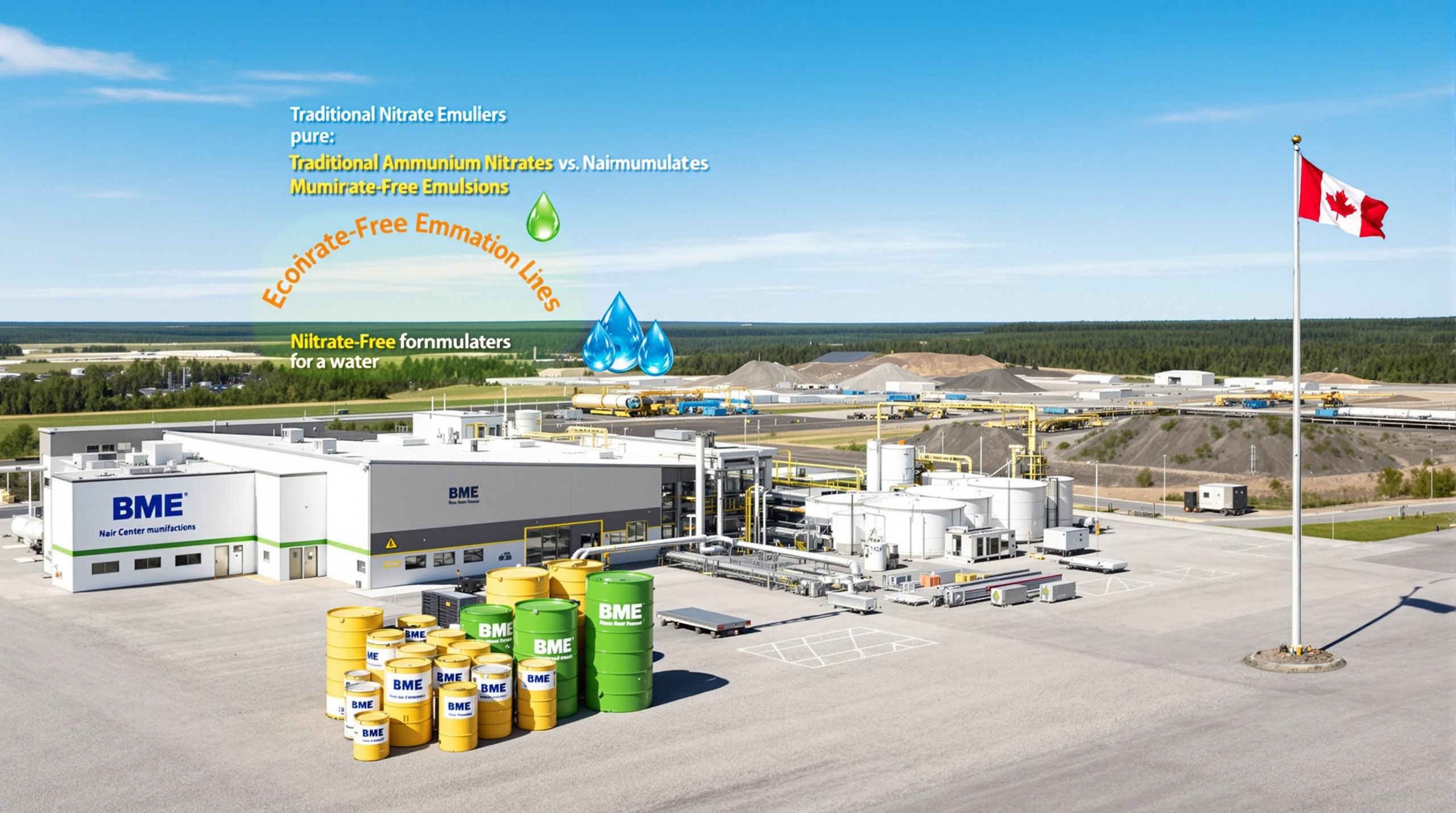Rio Tinto's Strategic Aluminum Investment in Canada: A $1.1 Billion Commitment
Rio Tinto has made a significant move in the North American aluminum market with its latest investment strategy. As a 40% stakeholder in Aluminerie Alouette, the mining giant is backing a substantial C$1.5 billion (US$1.1 billion) investment to modernize aluminum facilities in Quebec, reinforcing Canada's position as a critical aluminum producer for the continent.
What is Aluminerie Alouette's Major Investment in Quebec?
Aluminerie Alouette, a consortium led by Rio Tinto, has secured a pivotal electricity supply agreement with Hydro-Quebec that enables a C$1.5 billion investment in its northern Quebec operations. This strategic partnership with the provincial government-owned power utility provides the foundation for a comprehensive modernization of the Sept-Îles smelter facility.
The investment package, representing approximately US$1.1 billion in capital commitment, ensures the continued operation and enhancement of one of North America's most significant aluminum production centers. With an annual capacity of 630,000 metric tons, the Sept-Îles facility stands as a cornerstone of Canadian aluminum production.
According to industry sources, the official announcement of this investment is scheduled for July 5, 2025, marking a watershed moment for Quebec's industrial sector and North American aluminum supply chains.
The Scale and Scope of the Investment
The modernization project encompasses several key components:
- Comprehensive technological upgrades to the Sept-Îles smelter infrastructure
- Implementation of energy efficiency improvements throughout production processes
- Enhanced production capabilities to maintain competitive position
- Reinforcement of environmental controls and monitoring systems
- Long-term security through the new Hydro-Quebec power agreement
This investment represents more than simple maintenance capital – it signals a strategic commitment to the long-term viability of aluminum production in Quebec in the face of global market pressures and evolving industry evolution trends.
Why is This Investment Significant for North American Aluminum Production?
The timing of Rio Tinto's investment carries particular significance against the backdrop of shifting trade policies and supply chain vulnerabilities across North America. With the United States imposing new 50% tariffs impact markets on foreign aluminum imports, the stability of regional production capacity has become increasingly crucial.
North American Aluminum Market Dynamics
Quebec stands as the powerhouse of North American aluminum production, with striking dominance in the regional market:
- 70% of all North American aluminum originates from Quebec facilities
- Canada maintains its position as the largest aluminum exporter to the United States
- The U.S. faces a critical domestic production shortfall, lacking sufficient smelting capacity to meet internal demand
- This investment strengthens a vital industrial supply chain at a time of increasing economic nationalism
"The United States needs Quebec to meet its demand," stated Quebec Economy Minister Christine Frechette, highlighting the interdependence of the North American aluminum market despite trade tensions.
Impact of Recent U.S. Trade Policies
The implementation of 50% tariffs on foreign aluminum imports by the Trump administration has sent ripples throughout supply chains dependent on this essential material:
- Constellation Brands, a major consumer of aluminum for beverage packaging, anticipates $20 million in additional costs for the remainder of its fiscal year
- Manufacturers across various sectors face similar cost pressures and supply uncertainty
- Canadian production becomes simultaneously more vulnerable to tariff barriers and more essential to meeting continental demand
- Price volatility creates planning challenges for downstream industries
Despite these tariff headwinds, the investment demonstrates confidence in the long-term strategic importance of Canadian aluminum production to the integrated North American economy. The global tariff impact continues to reshape international trade relationships across multiple industries.
Who Are the Key Players in This Aluminum Investment?
The Aluminerie Alouette consortium represents a unique international partnership that brings together expertise and capital from multiple stakeholders, with Rio Tinto playing the leading role.
Aluminerie Alouette Ownership Structure
The investment structure reflects a distributed risk model with several key participants:
- Rio Tinto: 40% ownership stake (primary investor)
- AMAG Austria Metall AG: Significant European stakeholder bringing technical expertise
- Norway's Hydro Aluminium: Strategic consortium member with global aluminum experience
- Additional international investment partners providing complementary capabilities
This multinational ownership structure enables the sharing of technological innovations, market access, and financial risk across the consortium members, creating resilience in a capital-intensive industry.
Employment and Economic Impact
The Sept-Îles facility represents a vital economic engine for northern Quebec:
- 900 direct employees benefit from stable, high-quality manufacturing employment
- Thousands of indirect jobs supported throughout the regional supply chain
- Significant multiplier effect on local businesses and service providers
- Tax base enhancement for municipal and provincial governments
- Skills development and technical training opportunities for local workforce
The investment secures these economic benefits for years to come, providing stability to a region heavily dependent on resource industries and manufacturing.
How Does This Investment Compare to Global Aluminum Industry Trends?
Rio Tinto's investment in Quebec stands in stark contrast to the challenges facing aluminum producers in other regions, particularly those dependent on coal-fired power generation or operating in less politically stable environments.
Aluminum Market Challenges and Opportunities
The global aluminum industry faces multiple crosscurrents that influence investment decisions:
- Demand growth: Increasing use of lightweight materials in transportation, packaging, and construction
- Energy transition: Growing premium for low-carbon aluminum production methods
- Cost pressures: Rising energy prices and environmental compliance expenses
- Market fragmentation: Regional production advantages based on energy sources and regulatory environments
Industry analysts note that the most successful aluminum producers are strategically positioning production facilities near reliable, affordable, and preferably renewable energy sources – precisely the advantage Quebec offers.
Quebec's Competitive Advantages
The province brings several structural advantages to aluminum production:
- Abundant hydroelectric power at predictable, competitive rates
- Established transportation infrastructure for raw materials and finished products
- Skilled workforce with multi-generational expertise in aluminum production
- Political stability and consistent industrial policy support
- Proximity to major North American markets reducing logistical complexity
"Quebec's hydroelectric resources provide a sustainable competitive advantage that few global aluminum producers can match, particularly as carbon pricing mechanisms become more widespread," noted a recent industry analysis from the Aluminum Association.
These advantages create a compelling case for continued investment in the region, even amidst global market uncertainties and trade tensions. The energy transition benefits are increasingly becoming a key factor in investment decisions across the mining sector.
What Environmental and Sustainability Factors Are Driving This Investment?
The partnership with Hydro-Quebec stands at the center of the environmental case for this investment, aligning with growing market demand for low-carbon materials and processes.
Hydroelectric Power Partnership
The newly secured electricity supply agreement delivers multiple strategic benefits:
- Renewable energy access ensuring production with minimal carbon emissions
- Substantially lower carbon footprint compared to coal-powered aluminum production in China and elsewhere
- Marketing advantage for "green aluminum" with environmentally conscious customers
- Reduced exposure to potential carbon taxes or border adjustment mechanisms
- Long-term price stability for a major input cost
This renewable energy foundation positions the Aluminerie Alouette facility favorably in an increasingly carbon-constrained global market. Rio Tinto's approach aligns with broader industry efforts toward green metals leadership that is reshaping the global mining landscape.
Modernization Environmental Benefits
Beyond the baseline advantages of hydroelectric power, the modernization program will likely deliver additional environmental improvements:
- Enhanced energy efficiency throughout production processes
- Reduced process emissions through technological upgrades
- Improved resource utilization and waste management
- Advanced environmental monitoring capabilities
- Compliance with evolving regulatory standards
These improvements align with Rio Tinto's broader corporate commitments to reducing environmental impacts across its global operations and meeting growing customer demands for responsibly produced materials.
What Are the Broader Economic Implications of This Investment?
The investment signals confidence in the long-term viability of North American aluminum production despite challenging trade conditions and global competition.
Canadian Aluminum Industry Resilience
Several key implications emerge from this major capital commitment:
- Supply chain security: Reinforced capacity for a critical industrial material
- Trade relationship dynamics: Demonstrated continued interdependence despite tariff barriers
- Industrial policy success: Validation of Quebec's support for manufacturing and resource processing
- Competitive positioning: Strengthened ability to weather market fluctuations
The investment also challenges the narrative of inevitable manufacturing decline in North America, showing that with the right conditions and strategic focus, heavy industry can continue to thrive on the continent.
Quebec Government Perspective
Provincial authorities view the investment as validation of their industrial strategy:
- "Our priority remains to protect our economy and our workers," emphasized Economy Minister Christine Frechette
- The investment aligns with provincial goals for value-added resource processing
- It strengthens Quebec's position as an essential supplier to U.S. manufacturing
- Creates potential for additional downstream development in aluminum-dependent industries
The provincial government's support, particularly through Hydro-Quebec's power agreement, demonstrates the effectiveness of public-private partnerships in securing major industrial investments.
How Does This Compare to Rio Tinto's Global Aluminum Strategy?
The Canadian investment contrasts sharply with Rio Tinto's challenges in other aluminum-producing regions, particularly Australia, highlighting the company's differential approach based on regional advantages.
Rio Tinto's Aluminum Portfolio
As one of the world's largest aluminum producers, Rio Tinto maintains a diverse global footprint:
- Canadian operations: Leveraging hydroelectric power and established infrastructure
- Australian facilities: Struggling with high energy costs and seeking government support
- Additional operations: Strategically positioned across multiple continents
- Technological innovation: Focus on low-carbon production methods and efficiency
The company appears to be strategically reallocating capital toward operations with sustainable competitive advantages, particularly those with access to renewable energy and supportive policy environments. According to Rio Tinto's sustainability initiatives, the company has committed to significant environmental improvements across its operations.
Contrasting Regional Challenges
The investment decisions reveal Rio Tinto's assessment of regional competitive positions:
- Australian operations reportedly seeking government bailout assistance
- Energy cost disparities creating vastly different profitability profiles
- Regulatory environment variations influencing long-term investment confidence
- Market access considerations affecting strategic value of different production locations
This investment pattern suggests Rio Tinto is pursuing a portfolio optimization strategy, concentrating resources where structural advantages exist while potentially reducing exposure to less competitive regions.
What Are the Long-Term Implications for the North American Aluminum Market?
The investment reinforces the integrated nature of the North American aluminum market while potentially reshaping competitive dynamics across the continent.
Supply Chain Resilience
Several key benefits emerge for North American industrial customers:
- Secured production capacity within the continental market
- Reduced vulnerability to global supply disruptions
- Enhanced predictability for downstream manufacturers
- Potential price stability compared to volatile import markets
For industries ranging from aerospace to beverage packaging, the maintained and modernized Quebec capacity provides critical supply chain security. The Canadian government has welcomed the project as a significant step toward reducing greenhouse gas emissions while strengthening manufacturing capacity.
Market Position and Competition
The investment positions the consortium advantageously for future market developments:
- Strengthened position in premium low-carbon aluminum segments
- Enhanced competitiveness against higher-carbon imports
- Potential for market share growth as environmental considerations increase
- Improved ability to navigate trade policy uncertainties
The modernized facility will likely emerge with both cost and sustainability advantages that could reshape competitive dynamics throughout the North American market.
FAQ: Rio Tinto's Aluminum Investment in Canada
What is the production capacity of Aluminerie Alouette?
The Sept-Îles facility maintains an annual production capacity of 630,000 metric tons of primary aluminum, representing a significant portion of North America's total production capacity.
How many people does Aluminerie Alouette employ?
The facility provides direct employment to approximately 900 people, making it one of the largest employers in the Sept-Îles region of Quebec.
What percentage of North American aluminum comes from Quebec?
According to Quebec Economy Minister Christine Frechette, Quebec produces approximately 70% of all aluminum in North America, highlighting the province's critical importance to continental supply chains.
How will U.S. aluminum tariffs affect this investment?
While the 50% tariffs imposed by the Trump administration create significant challenges for Canadian aluminum exports, they also underscore the strategic importance of maintaining North American production capacity, given the U.S. market's dependence on imports to meet demand.
When will the official announcement about this investment be made?
According to industry sources familiar with the matter, the official announcement is scheduled for Friday, July 5, 2025.
Disclaimer: This article contains forward-looking statements regarding market conditions, trade policies, and investment outcomes. Actual results may vary from projections based on numerous factors including regulatory changes, market conditions, and technological developments. Readers should consult with qualified financial and industry advisors before making investment decisions based on this information.
Want to Catch the Next Major Mineral Discovery?
Stay ahead of the market with real-time alerts on significant ASX mineral discoveries, powered by Discovery Alert's proprietary Discovery IQ model. Visit our dedicated discoveries page to understand how major mineral discoveries have historically generated substantial returns, and begin your 30-day free trial today.




